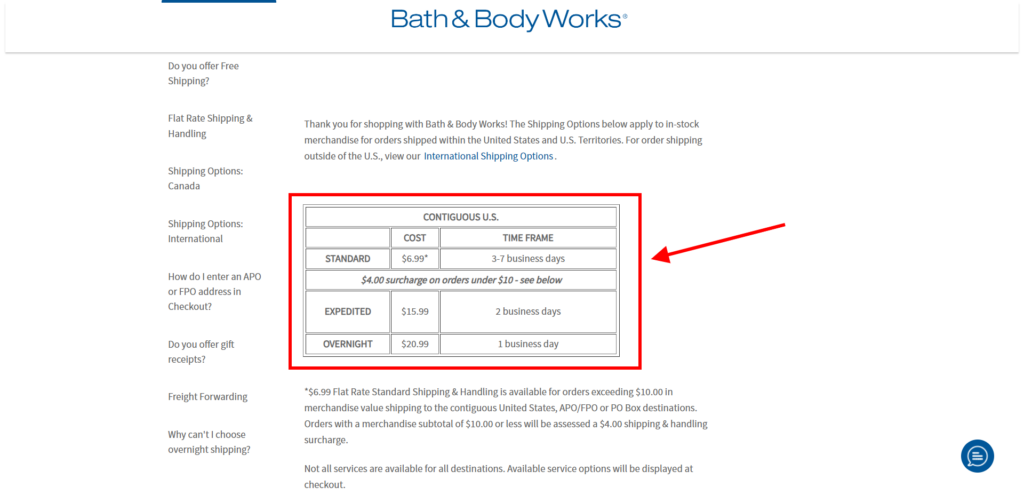Decide When Fast Shipping Is Worth It and When to Cut Shipping Costs
Modern customers expect fast shipping speeds, yet e-commerce businesses must determine if an ultra-fast delivery is worth the cost. E-commerce founders, operators, and logistics professionals tasked with making daily decisions about shipping speeds and costs should also consider how fast shipping affects business margins.
This article covers the benefits and downsides of both standard and expedited shipping to help you make the best choices based on customer needs, what you sell, and average rates.
What Does Expedited Shipping Mean?
As stated above, this type of shipping is a faster-than-standard delivery service. Thanks to priority handling and shorter transit times, customers can receive goods in 1-3 days, overnight, or on the same day of placing an order. Moreover, it often enables them to track orders and provides security capabilities.
Yet, the speed and convenience come at a greater price. But if you need to transport time-sensitive or high-value items, this option is ideal. Keep in mind that the precise delivery time can change based on the service and the location.
Why Companies Choose Expedited Shipping
Although it’s pricey, expedited shipping pays off in terms of speed, perceived customer value, and the potential competitive edge it gives your business. Here are some of the reasons why expedited shipping might be for you:
- Boosting Customer Satisfaction: Online shopping lacks the main benefit of offline shopping: immediate gratification. You see the desired thing and can get it right away, which is a very pleasant feeling. Yet, the ability to get the product in no time via expedited shipping brings online shopping closer to the offline option due to speeding up the delivery process. As the products arrive sooner than expected, it promotes a positive attitude toward your company, boosting customer loyalty and ensuring repeat orders. Thus, expedited shipping, along with following other CRO recommendations, can be a valuable option enhancing the overall customer experience.
- Outperforming Competitors: This one is simple: while your competitors will process the orders, you can deliver them in no time. Standing out from the crowd in a saturated eCommerce market is key. Expedited shipping can be your unique value proposition that shows you value customers, making your brand more appealing to shoppers.
- Serving Orders with a Tight Deadline: Some purchases require speedy delivery. Suppose you forgot someone’s birthday or broke something and need a new detail. Expedited shipping comes in when orders can’t wait. Regardless of the urgency, it fulfills the need, offering a priceless service.
Expedited Shipping Drawbacks to Consider
Expedited shipping isn’t flawless. You should consider several drawbacks that may impact your bottom line and reputation.
- Increased Operational Expenses : The rapid speed of expedited shipping becomes possible due to the use of expensive transportation methods. The two most costly options for this are air freight and specialized delivery trucks. If you cover these expenses yourself, they may affect your profit margin. But if you grant this responsibility to customers, additional costs may discourage them from buying.
- Possible Geographical Barriers: Expedited shipping isn’t available everywhere. Certain isolated or rural areas may lack the infrastructure needed for prompt deliveries. Now consider a scenario where you promised quick delivery, which is not feasible because of regional limitations. The inability to meet customers’ expectations may spoil the brand image and future sales. Additionally, international expedited shipping may require navigating complicated customs processes, which could result in delays and cost more money.
What Does Standard Shipping Mean?
Standard shipping (also known as ground shipping or economy shipping) is a typical delivery option without the availability of expedited or overnight delivery. It is perfect for non-urgent orders because it is often the most economical and popular shipping solution.
Standard shipping’s main features are a set arrival date and a cost predetermined by the carrier. Delivery times may vary greatly depending on the destination and the service provider. Standard shipping typically takes five to eight business days for domestic shipments within the US, but it may take several weeks for international shipments.
Why Companies Choose Standard Shipping
Businesses frequently choose standard delivery for a number of reasons. Let’s overview them.
- A Trade-off Between Increased Delivery Times and Associated Costs: Customers concerned about their budget often find standard shipping appealing because of its low costs. It may be a decisive factor in establishing positive connections with the company.
- Wide Geographic Availability: Standard shipping has little to no logistical constraints compared to expedited shipping. It broadens your customer reach, catering to shoppers living in remote areas.
- Appropriate for Goods That Can Wait: Not all consumers require immediate delivery. Some are more than happy to wait a couple of days longer to save money on shipping. If the orders aren’t time-bound, standard shipping can appeal to those who value cost savings over speed.
Standard Shipping Drawbacks to Consider
- Customers Have to Wait Longer: The most obvious drawback and difference between expedited vs. standard shipping is the prolonged delivery time. As buyers’ expectations grow, you should keep up with them and offer speedy, sometimes even same-day deliveries. But standard shipping may not always live up to these expectations. It can divert some customers from your brand, leading to lost sales.
- It’s Not Appropriate for Time-Sensitive Orders: Another problem revolves around your reputation. As standard shipping won’t let consumers get last-minute gifts or replace a crucial component, it may cause customer dissatisfaction. As a result, they may leave negative reviews and prevent other potential clients from buying.
Expedited vs. Standard Shipping: Situations Where They Are Recommended
When You Should Choose Expedited Shipping
Now let’s see what types of companies should introduce expedited shipping. Consider this option if these business scenarios apply to you:
- You sell time-sensitive products like perishables, event-related items, and seasonal goods. To ensure the items’ high quality and that they are still relevant, you need to deliver them as fast as possible with expedited shipping.
- You want to cover urgent or emergency orders. Unexpected situations may arise regardless of the type of products you provide. Shoppers may turn to you due to an unplanned event or a sudden change of weather. Think of whether you want to be the trusting partner for your clients and be the one they can count on in times of need.
- Your target market is premium customers. A clever strategy to draw in VIPs is to offer expedited shipment. Customers who place a high value on time are ready to pay more. You can position your company to serve this consumer category by providing a quick shipping alternative. It can increase revenue and strengthen your brand’s reputation for delivering exceptional customer service.
When You Should Choose Standard Shipping
If the situations above aren’t relevant to your business strategy, standard shipping may be a more sensible choice. Let’s see when this type of shipping is preferable.
- You sell non-urgent products like home decor, books, or non-perishable goods. Such items aren’t time-sensitive and won’t give up on their quality if delivered more slowly but at a more affordable price.
- You target cost-conscious customers. To attract a wider audience, having more adaptable options is a must.
- Most of your orders are predictable. Examples include subscription boxes and routine stock replenishments, where customers expect the delivery at a particular time and specify this information in advance.
Expedited and Standard Shipping: How to Find the Right Balance
You don’t have to choose only one option and sacrifice one over the other. You can leverage both expedited and standard shipping on your shopping cart or web store, and in this section, we’ll give some points on how to do it right.
Provide Flexible Shipping Options
By introducing both options, you unlock more selling opportunities. While standard shipping will appeal to cost-conscious customers, the expedited one will attract those in a rush and ready to pay. By doing so, you position the company as customer-centric, potentially enhancing customer loyalty, satisfaction, and conversions. Here are some tips on how to gain more from both alternatives:
- Make standard shipping free but only upon reaching a set threshold. Shoppers value free delivery, which can improve the average order value by 97% and reduce cart abandonment by 18%. But it may scare off some merchants as they have to cover the delivery themselves.
The solution? Free delivery thresholds. They encourage people to add more products to the cart, thus increasing the AOV and minimizing delivery expenses. Check how the Bettys online store displays a message about free delivery. After you click the “Add to basket” button, the pop-up appears saying how much you need to spend to get access to free UK mainland delivery.

Leverage tiered pricing for expedited shipping based on the delivery speed (for example, next-day and two-day deliveries). It will provide more flexibility to clients and allow them to control their spending.
Be Clear with Customers
Trusting relationships are all about transparency. Communicate with buyers to inform them about the estimated delivery dates and prices for both shipping alternatives. Do it upfront before they reach the checkout to reduce the likelihood of dissatisfaction due to unforeseen delays or figures in their checks.
For example, Bath & Body Works has a dedicated page with all the needed information, as seen in the screenshot below. It lets consumers make decisions based on their urgency and financial possibilities.

As for the tips, consider the following:
- When describing shipping alternatives, use plain and simple language. Steer clear of industry jargon that could mislead buyers.
- Send prompt updates on the whereabouts of the package and the anticipated time and date of delivery.
Leverage Technology for Optimal Decisions
Modern technology aims to reduce manual labor and speed up the shipping process. Its capabilities include:
- real-time tracking;
- delivery time prediction;
- the analysis of various factors like distance, traffic, and the package’s weight and size;
- suggesting the most efficient shipping method and routes, among others.
Utilizing such technology as Cargowise, Magaya, and Descartes increases operational effectiveness, reduces wasteful expenses, and enhances customer satisfaction by giving timely and accurate delivery information. Here are some points worth mentioning:
- Use automated systems like ShipStation or Easyship to determine the most cost-effective shipping method based on the package size, weight, and destination.
- Employ AI to forecast delivery delays and proactively communicate with customers. For example, Maersk, a renowned shipping and logistics company, has introduced an AI assistant, Captain Peter, to manage shipping. While recommending the most effective shipping routes, it may offer prompt and useful solutions to consumer problems.
Collect Customer Feedback to Improve
Want to know how customer perceive their shipping experience? Gather their feedback by reading reviews, analyzing their complaints to customer service, and asking them. Feedback shows the areas for improvement and highlights the underperforming parts of the process, such as long delivery times or high shipping costs.
- Send surveys via email or add feedback forms to the website to find out what your consumers think of your shipping services.
- Recognize persistent problems in feedback and take timely action to resolve them. It may be time to reassess your logistics procedures or find a more dependable shipping provider, for instance, if numerous clients complain about delayed deliveries.
Final Thoughts on Expedited vs. Standard Shipping
As you can see, choosing between expedited vs. standard shipping is relatively easy. You should consider several factors, including the types of goods, the required level of urgency, location, and the target audience to settle on the best-suited option. We’ve analyzed each kind of shipping from various angles. Remember to strike a balance between these solutions to cater to more prospects, meet customer expectations, and maximize sales.
This guest post is written by Art Malkovich. Art is a co-founding partner and CEO at Onilab. The company develops eCommerce websites and progressive web apps on a turnkey basis and offers store migration and UX/UI design services. Art has profound web development, project management, and data analysis expertise. He strives to keep the team one step ahead with a current focus on headless commerce.

















